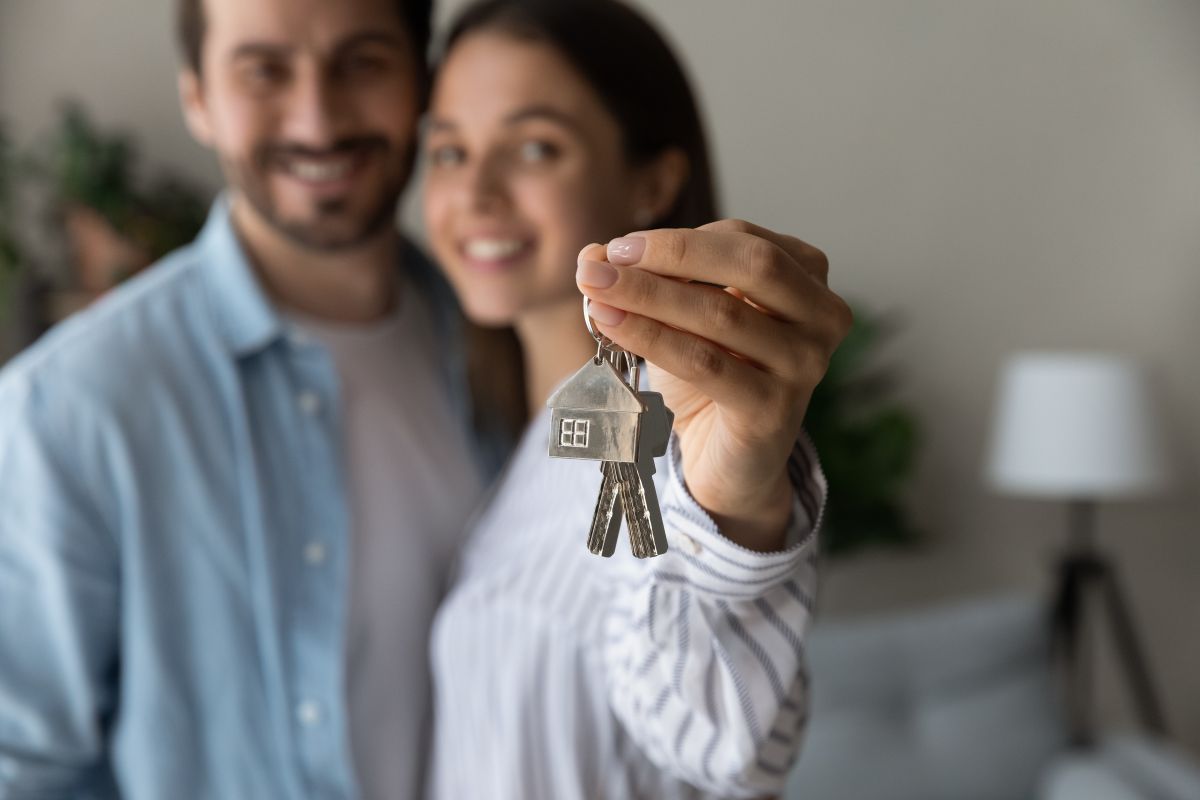Getting your foot on the property ladder can feel like an uphill climb—especially when you’re trying to understand how mortgages work in Ireland. If you’re a first-time buyer, don’t worry. You’re not alone, and we’re here to guide you through it all including answering the big question: how do first time buyer mortgages work?
From how much you can borrow, how to qualify, to what steps you need to take—this beginner’s guide breaks it down in plain English.
What is a mortgage and why do first-time buyers need one?
Let’s start with the basics.
A mortgage is a long-term loan used to buy property. Unless you’re lucky enough to have hundreds of thousands of euros in savings or a rich and generous aunt! you’ll need a mortgage to help finance your home.
In Ireland, most first-time buyers rely on mortgages because house prices are well beyond the average person’s ability to pay in full. A mortgage allows you to spread the cost of your home over 20 to 35 years, making it possible to buy now and pay over time.
How do first-time buyer mortgages work?
As a first-time buyer in Ireland, you can typically borrow up to 90% of the purchase price of your home. That means you need to have a 10% deposit—which can come from your own savings, a gift from family, or another non-borrowed source. If you’re asking how a mortgage for first time buyers works, the answer starts with understanding your borrowing limits, eligibility criteria, and the key steps involved in the application process.
The key components of a first-time buyer mortgage
Before you start comparing lenders or filling out applications, it’s helpful to understand the main elements that make up a mortgage for first-time buyers. Here’s what makes up a typical first-time buyer mortgage:
- Deposit: The initial payment, usually 10% of the property’s price.
- Loan-to-Value Ratio (LTV): This is the ratio of the mortgage amount to the property’s value. First-time buyers usually have a 90% LTV.
- Interest Rates: These can be fixed (same rate for a set period) or variable (can go up or down).
- Repayment vs. Interest-Only: Most first-time buyers go for repayment mortgages, where you pay back both the interest and the principal. Interest-only options are rare and normally only offered on Buy to Let mortgages or on Self-Build mortgages in the first year while the house is still under construction.
How to qualify for a first-time buyer mortgage
Lenders assess your overall financial situation to decide whether you’re eligible for a mortgage and how much they’re willing to lend. To qualify, lenders look at several factors:
- Income: Your salary determines how much you can borrow.
- Affordability Assessments: Banks want to see that you can manage repayments.
- Employment & Financial History: Stable job, clean financial records, and good savings habits are key.
- Credit Rating: A healthy credit history improves your chances.
- Bank Statements: It is important your bank statements are in good shape with no missed or late repayments, especially in the last 6 months before a mortgage application.
Want more detail? Check out our guide on how to qualify as a fist time home buyer.
Different types of mortgages for first-time buyers
When you’re buying your first home, choosing the right type of mortgage is just as important as finding the right property. The kind of mortgage you go for can affect your monthly repayments, your long-term costs, and even your eligibility. There are different mortgage types to suit different needs. The most common ones for first-time buyers in Ireland include:
- Fixed Rate Mortgages: Your interest rate stays the same for a set term (usually 1–7 years).
- Variable Rate Mortgages: The interest rate can rise or fall depending on the lender’s decisions or market conditions.
- Green Mortgages: Available for energy-efficient homes and offer lower interest rates.
For a deeper dive, read our full article on choosing a variable or fixed rate mortgage here.
Steps to getting your first mortgage
Getting your first mortgage might feel overwhelming, but the process is more straightforward than it seems—especially when you break it down step by step. Here’s a simplified version of the typical journey to homeownership in Ireland:
- Save for a deposit
Most lenders require a 10% deposit for first-time buyers. This can come from savings, a gift, or the Help to Buy scheme.
Learn more in our article: deposit required for first time buyers. - Contact a mortgage broker or bank
You can go directly to a bank or work with a mortgage broker who’ll compare deals across multiple lenders. Wondering which is better? Read: is it better to use mortgage broker or bank. - Get a mortgage agreement in principle
This gives you a rough idea of how much you can borrow before house hunting and shows sellers you are a serious buyer. - Find a home and make an offer
Once you find a property and go “sale agreed”, the process moves quickly— have your mortgage approval and solicitors details ready. - Get your mortgage loan offer
You’ll need to progress your mortgage approval in principle to a full and formal mortgage loan offer. The bank may look for up to date documents like bank statements, payslips, and proof of savings/rent payments. If approved, you’ll get a formal mortgage offer. - Finalise the mortgage and complete the purchase
Once your solicitor has the mortgage loan offer and sale contracts have been reviewed and signed then you will agree a closing date when you will get your keys!
Having a good mortgage broker on your side is vital to make sure everything goes as smoothly as possible every step of the way.
How MortgageLine can help first-time buyers
We’re experts in mortgages for first time buyers in Ireland. Here’s what we do to make your life easier:
✅ Expert advice tailored to first-time buyers – Whether you’re just starting out or ready to apply, we guide you every step of the way and help you understand how first time buyer mortgages work in Ireland.
✅ Deposit guidance – Not sure how much you need or where it can come from? We’ll explain your options clearly.
✅ Scheme support – We’ll show you how to use the Help to Buy scheme or First Home Scheme to boost your buying power.
✅ Access to multiple lenders – Because we’re a broker, we shop around for the best deal—so you don’t have to.
Ready to start? Take your first step by learning how to be mortgage ready.
FAQs
What are the final steps in the mortgage process?
After approval, your solicitor will handle legal checks, you’ll sign contracts, and the mortgage funds will be released to the seller. You’ll then get your keys and move in!
Is it better to complete at the end of the month?
Some buyers choose to close at the start or the end of the month in the hopes of saving on mortgage interest. However, most lenders charge mortgage interest daily, so it does not really make a difference when you close.
How can a first-time buyer get mortgage ready?
Start saving early, keep your finances clean, and gather your documents. Our full guide on how to be mortgage ready can help.
What types of mortgage interest rates are available?
You can choose between fixed, variable, or green mortgages.
Final Thoughts
So, how does a mortgage work for first-time buyers in Ireland? It’s a process—but it’s one you don’t have to go through alone.
At MortgageLine, we’re here to simplify the journey. Whether you’re wondering if you’ll qualify, how much you can borrow, or what deposit you need—we’ll help you understand your options and make smart decisions.
👉 Contact us today for a free consultation and take the first confident step toward your home ownership.






